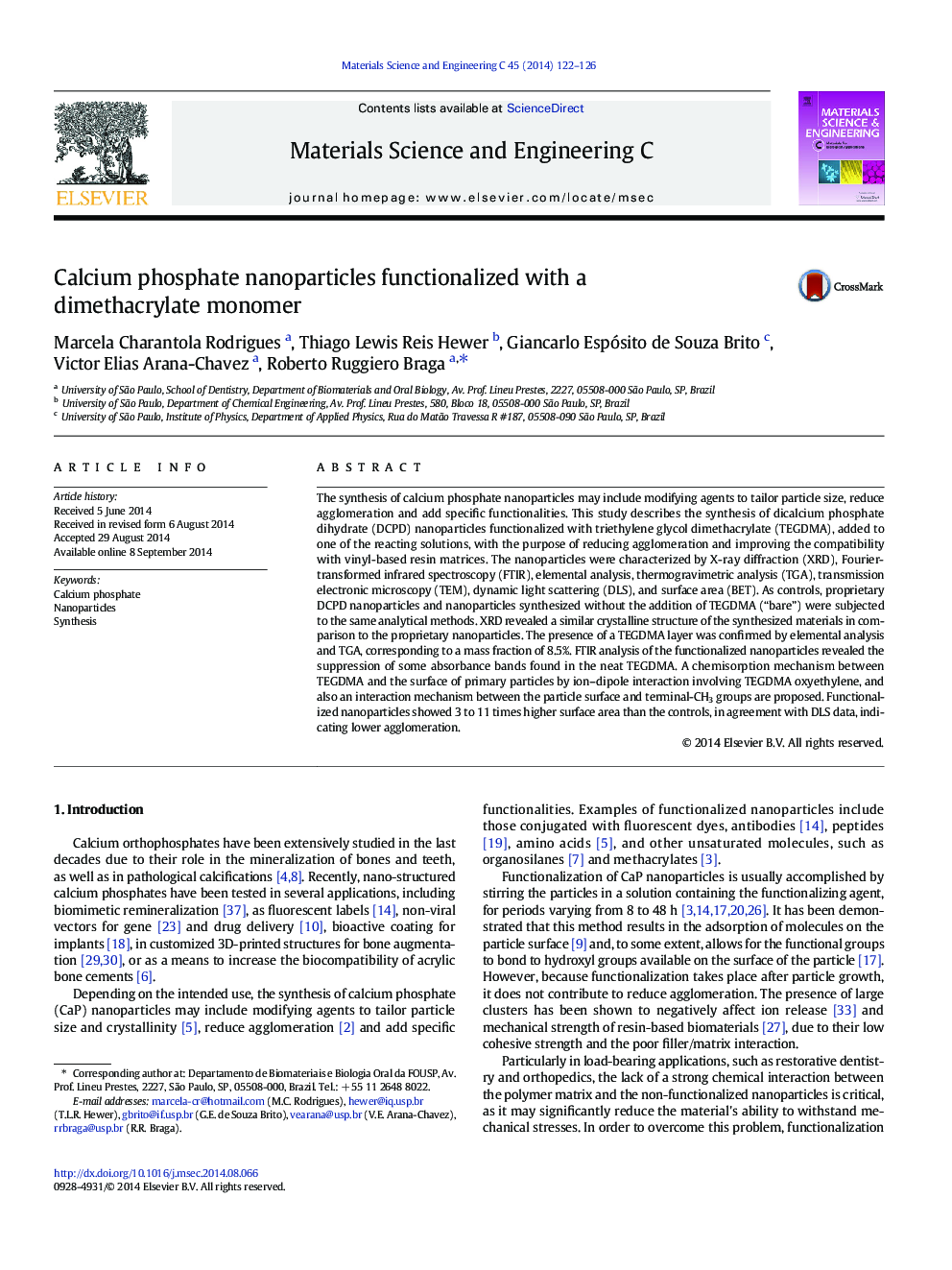| Article ID | Journal | Published Year | Pages | File Type |
|---|---|---|---|---|
| 1428539 | Materials Science and Engineering: C | 2014 | 5 Pages |
•Dicalcium phosphate (DCPD) nanoparticles were functionalized ab initio using TEGDMA.•Triethylene glycol dimethacrylate was chosen due to its polymerizable vinyl groups.•These nanoparticles would have a better interaction with dimethacrylate resins.•An ion–dipole chemisorption mechanism between DCPD and TEGDMA is described.•The functionalized nanoparticles showed lower agglomeration compared to the controls.
The synthesis of calcium phosphate nanoparticles may include modifying agents to tailor particle size, reduce agglomeration and add specific functionalities. This study describes the synthesis of dicalcium phosphate dihydrate (DCPD) nanoparticles functionalized with triethylene glycol dimethacrylate (TEGDMA), added to one of the reacting solutions, with the purpose of reducing agglomeration and improving the compatibility with vinyl-based resin matrices. The nanoparticles were characterized by X-ray diffraction (XRD), Fourier-transformed infrared spectroscopy (FTIR), elemental analysis, thermogravimetric analysis (TGA), transmission electronic microscopy (TEM), dynamic light scattering (DLS), and surface area (BET). As controls, proprietary DCPD nanoparticles and nanoparticles synthesized without the addition of TEGDMA (“bare”) were subjected to the same analytical methods. XRD revealed a similar crystalline structure of the synthesized materials in comparison to the proprietary nanoparticles. The presence of a TEGDMA layer was confirmed by elemental analysis and TGA, corresponding to a mass fraction of 8.5%. FTIR analysis of the functionalized nanoparticles revealed the suppression of some absorbance bands found in the neat TEGDMA. A chemisorption mechanism between TEGDMA and the surface of primary particles by ion–dipole interaction involving TEGDMA oxyethylene, and also an interaction mechanism between the particle surface and terminal-CH3 groups are proposed. Functionalized nanoparticles showed 3 to 11 times higher surface area than the controls, in agreement with DLS data, indicating lower agglomeration.
Graphical abstractFigure optionsDownload full-size imageDownload as PowerPoint slide
